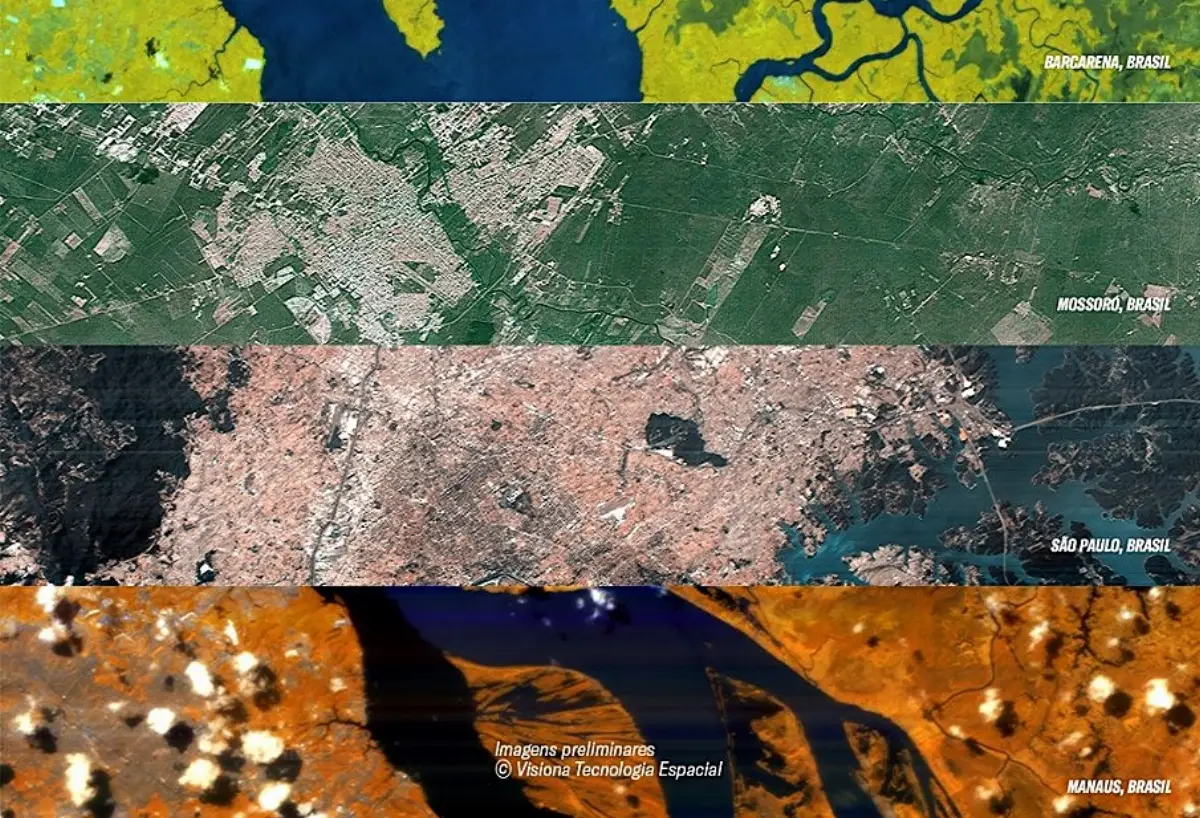
Brazil: Visiona releases the first images captured by the VCUB1 satellite
The first high-performance one designed by the national industry

Visiona, the joint-venture between Embraer and Telebras, has presented the first images collected by VCUB1, the first high-performance satellite designed by Brazil’s national industry, and has thus concluded the operational evaluation of the satellite. "Satellites play a key role all over the world and in Brazil. VCUB1 can be used for issues that are central to the country, such as environmental protection, responding to natural disasters, fighting wildfires or even developing agriculture", says João Paulo Rodrigues Campos, Visiona's CEO. "In addition to generating new business opportunities, expanding Brazil's space infrastructure and creating jobs".
Weighing just 12 kg, VCUB1 is equipped with a high-resolution camera and an advanced communications system. VCUB1 is also the first satellite with onboard software 100% developed in Brazil, which translates into complete autonomy in the project. The success of the mission proves Visiona's ability to develop solutions capable of addressing major challenges facing the Brazilian Space Program. After the launch in 2023, the satellite’s first year of life was dedicated to developing and maturing systems. This was followed by calibration of the sophisticated camera so that the first images could be collected and released.
VCUB1 was originally designed to validate the navigation and control systems developed by Visiona, marking the first time these technologies had been mastered by the country. "Mastering the embedded software is what gives us the freedom to integrate or replace any component, giving us total freedom in the project. We have joined a select group of companies in the world capable of fully designing satellites", says Himilcon Carvalho, Visiona's CTO. "The images, in turn, confirm the performance of the systems developed, which should now equip the company's next projects".
The project, led by Visiona, included the participation of several Brazilian companies and science and technology institutes such as OPTO Space & Defense, responsible for designing and building the camera, AMS Kepler, Metalcard, Orbital Engenharia, Embrapii, through its ISI Embarcados SENAI-SC unit, the Air Force's Aeronautics and Space Institute and INPE. In addition, the Brazilian Space Agency, Embrapa, CPRM, CEMADEN, UFSC, ITA, Government of Santa Catarina, CENSIPAM, IICA, São José dos Campos City Hall, Naturantins, Transpetro and IBAMA contributed to the satellite’s development.
AVIONEWS - World Aeronautical Press Agency